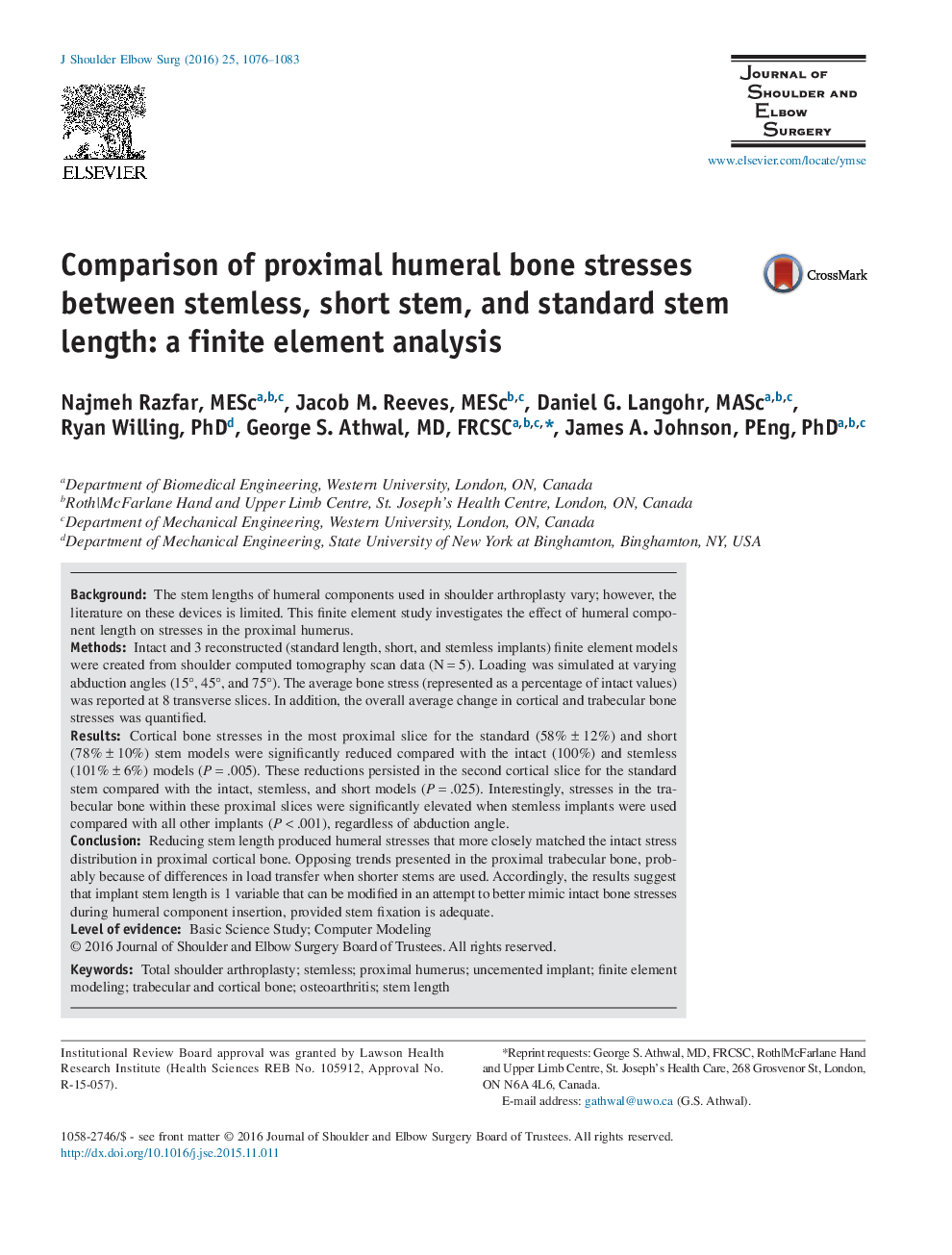| Article ID | Journal | Published Year | Pages | File Type |
|---|---|---|---|---|
| 4072969 | Journal of Shoulder and Elbow Surgery | 2016 | 8 Pages |
BackgroundThe stem lengths of humeral components used in shoulder arthroplasty vary; however, the literature on these devices is limited. This finite element study investigates the effect of humeral component length on stresses in the proximal humerus.MethodsIntact and 3 reconstructed (standard length, short, and stemless implants) finite element models were created from shoulder computed tomography scan data (N = 5). Loading was simulated at varying abduction angles (15°, 45°, and 75°). The average bone stress (represented as a percentage of intact values) was reported at 8 transverse slices. In addition, the overall average change in cortical and trabecular bone stresses was quantified.ResultsCortical bone stresses in the most proximal slice for the standard (58% ± 12%) and short (78% ± 10%) stem models were significantly reduced compared with the intact (100%) and stemless (101% ± 6%) models (P = .005). These reductions persisted in the second cortical slice for the standard stem compared with the intact, stemless, and short models (P = .025). Interestingly, stresses in the trabecular bone within these proximal slices were significantly elevated when stemless implants were used compared with all other implants (P < .001), regardless of abduction angle.ConclusionReducing stem length produced humeral stresses that more closely matched the intact stress distribution in proximal cortical bone. Opposing trends presented in the proximal trabecular bone, probably because of differences in load transfer when shorter stems are used. Accordingly, the results suggest that implant stem length is 1 variable that can be modified in an attempt to better mimic intact bone stresses during humeral component insertion, provided stem fixation is adequate.
